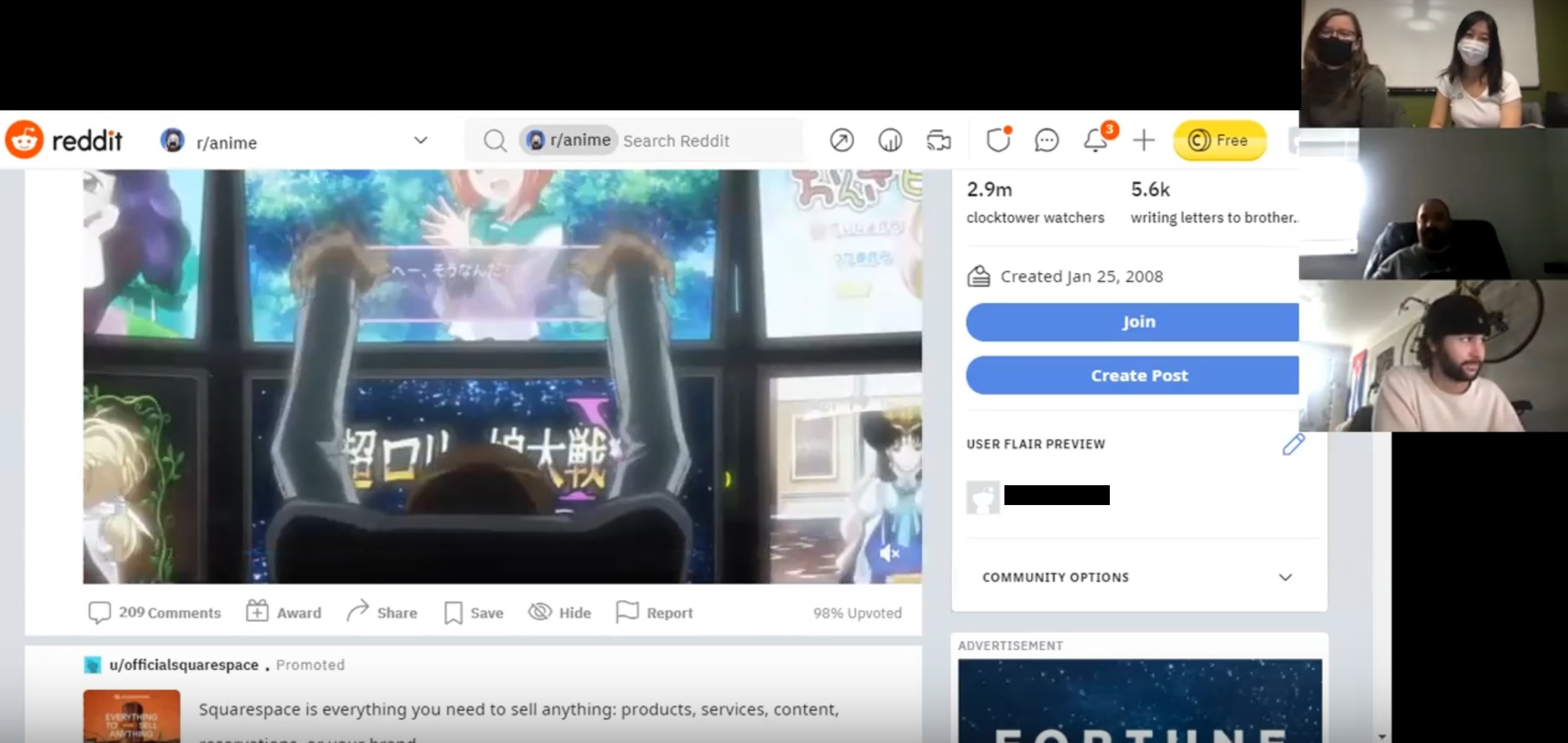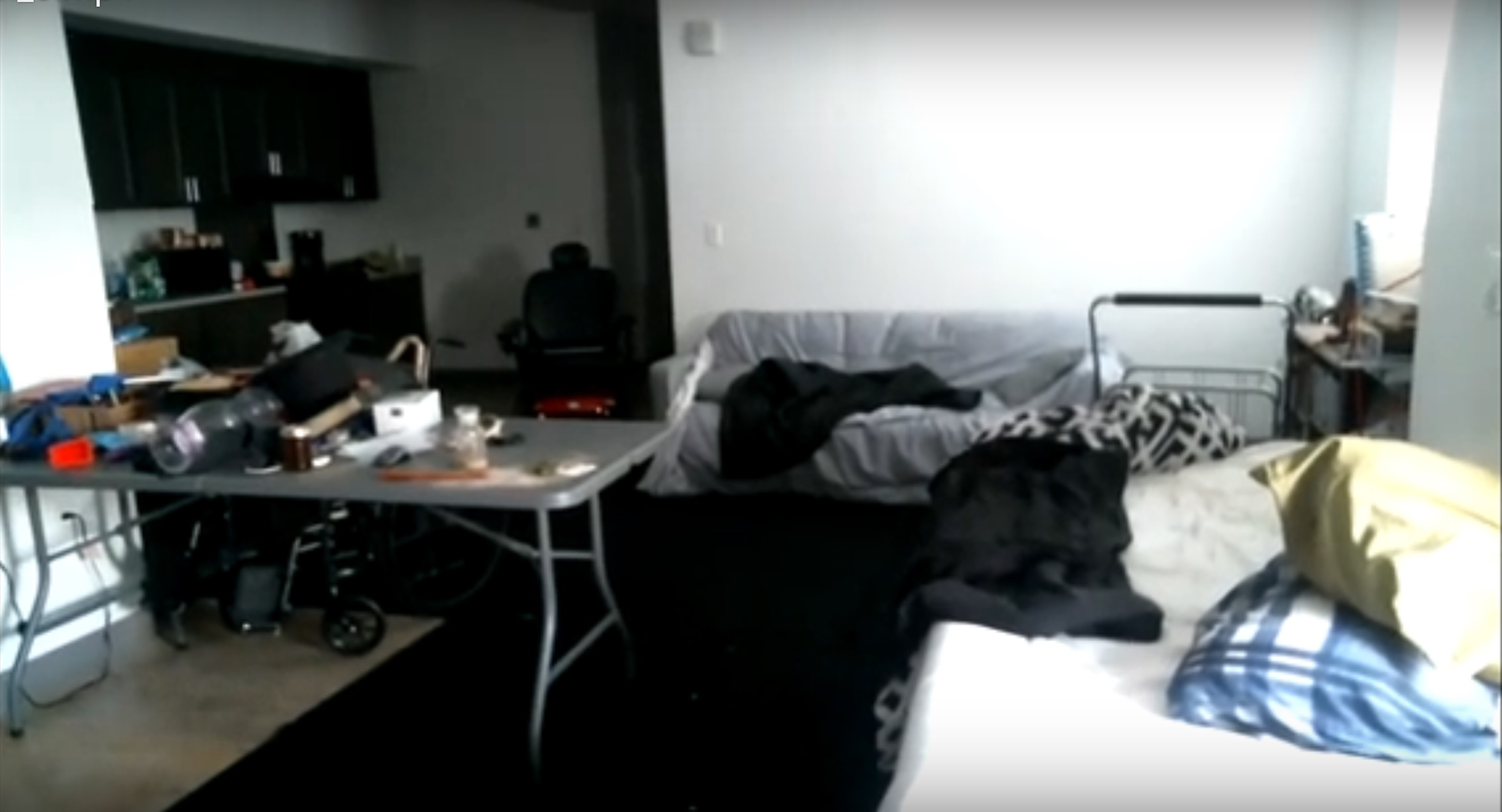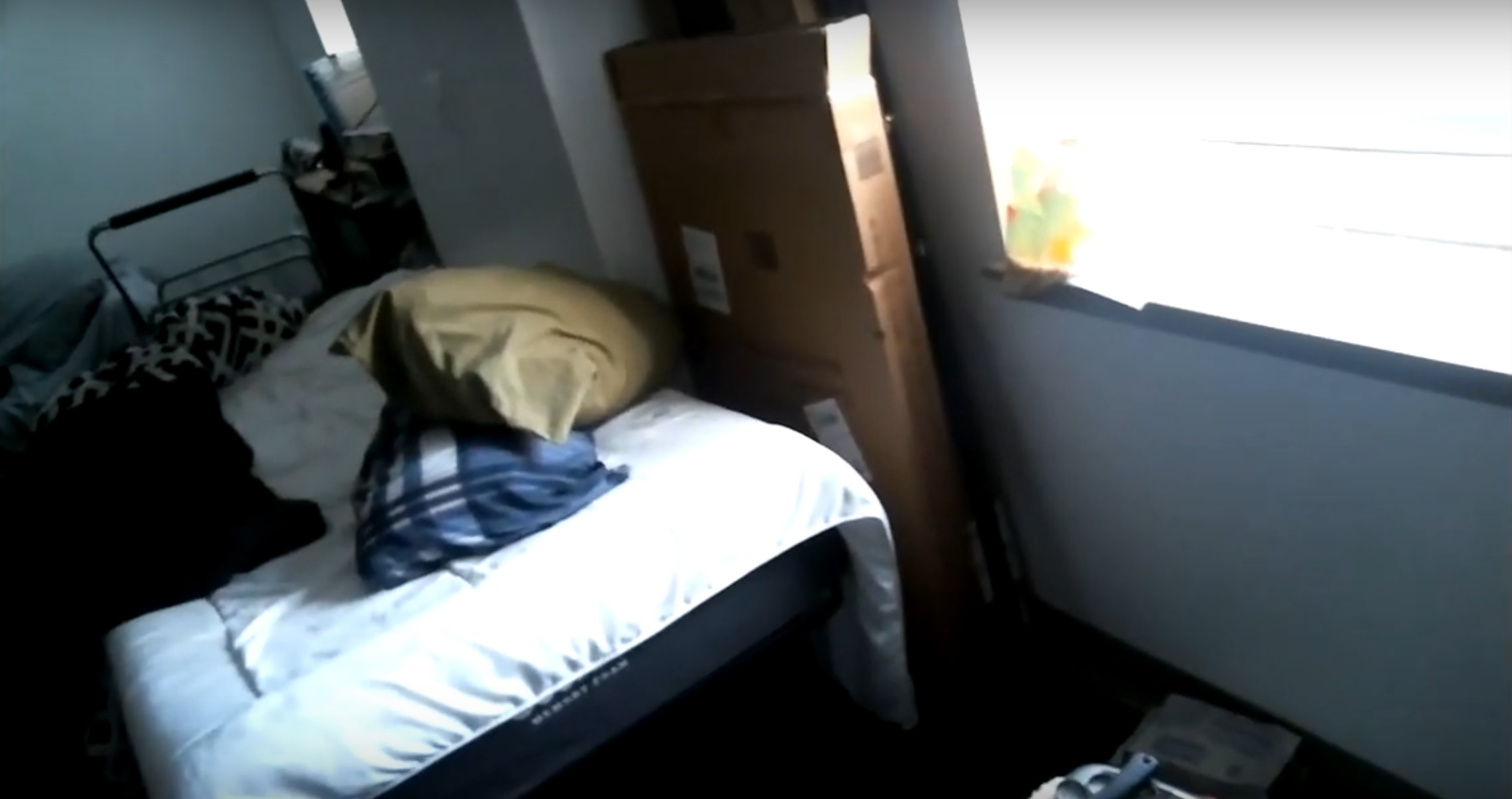Introduction
The objective of this project is to design a product for a client with physical disabilities. We (Team Prunes) set up a meeting with our client, Dave, to better understand his needs and learn about his ideas for the product. The meeting took place at 12:30 pm EST on Nov.2nd. All team members (Bella, Emily and Noel) were present at the meeting, along with our client Dave.
Agenda
- Casual Conversation
Start the meeting with casual chatting to allow both parties to get to know each other better. The team members can introduce their fields of study and interests. It would be great to know more about our client – his interests, his passion, his careers, etc. This would help us know more about what his general everyday life is like, which can help us design a product that pertains to his needs.
- Explanation and clarification about the project
Briefly reiterate the scope and goals of the project and the general timeline of the whole project process.
- Understanding the Needs
To better design the product, we should know more about the condition of Dave’s physical disabilities. Specifically, we would want to know the medical condition, how does it affect his daily life, and what particular challenges he faces. Knowing these challenges can help us come up with some product that can target these problems that he faces regularly, and thus be helpful to his everyday life.
We would also want to see his living environment if that’s possible.
- Discussing the Client’s Ideas
Before coming up with our own ideas, it would be great to know if our client already has some designs in his mind, and if so, what they are. If they’re within the project scope and are achievable given the timeframe, it would be great if we can build something that Dave has in mind already.
- Ideation process
Based on the information we’ve gathered, we can start brainstorming on the potential ideas for this project, and discuss them during the rest of the meeting.
Summary/Takeaways
Meeting Dave gave us a good grasp on the kind of things he wanted help with from us. Even though more than half of the meeting was more banter than interview, we were able to learn a lot of useful information.
Initially Dave mentioned the best candidates he could think of for an accessibility device; architecture, genetics experiments, and carpentry.
He expanded on these and told us which of his physical limitations got in the way of the things he likes to do. Primarily, his worry was loss of mobility in his left arm. With only one agile arm, normal tasks like carrying potted plants, holding work pieces, and opening hydraulic doors became difficult barriers.
“My arm doesn’t work anymore, neither do my legs or my back, so yeah, I’m basically down to my right arm and that’s it.”
“My left arm doesn’t work anymore. I’ve torn the muscles out in my left shoulder from not having a 150-million percent accessible apartment – I mean, my apartment is but the building is not. And not having an attendant because everyone keeps quitting. I go through attendants like tissues because they’re essentially single use. ”
On of the first things we learned about Dave is his variety of hobbies and interests, which was a great way for us to learn more about him and brainstorm possible points of intervention for us to help. It was clear that he had been thinking of some of these common occurrences before which helped us identify what specifically got in the way of him doing the things he loves:
“I really like baking! I’m a pretty good cook, if my arms or legs work, which they don’t really anymore. So being able to get into and out of the oven without injuring myself would be great.”
“I’d like to be able to do genetics stuff with trees because it is way easier than you think, but I need to be able to get down to the ground without injuring myself or throwing myself out of my wheelchair.”
Another major aspect of Dave’s life is his computer. With four monitors total, he spends a lot of his time on the computer and enjoys multitasking with them, even mentioning to us that the only thing stopping him from having more monitors is the amount of power and desk space he has.

Dave showing us his ideal PC setup of having many many monitors to multitask with.
Looking at his PC setup, we were quite impressed but were also able to see some things that Dave keeps within reach for frequent use, like a towel.
“I have a towel so that when I have hot food from the microwave, I can put it in my lap and not burn myself, since I can’t hold it with my hand.”

Dave’s PC setup, along with the towel he uses to help him eat food without burning himself.
We closed our conversation with some specifics about his situation. We were able to see his powered wheelchair, and saw some of the limited use he had in his left hand.
“Before I used a wheelchair, I used a walking stick, but before that I even had trouble walking, so having a chance to sit when waiting in line and then instantly get back up again would be really helpful.”

Dave’s apartment, with his electric and manual wheelchairs that he uses to get around.
“Half the reason I lost my ability to drive was when I collapsed since I was waiting in line for so long at the DMV that they said I wasn’t able to drive”
Q: “What position is most comfortable for you to be in, like sitting and relaxed?”
A: “None. I have to move a lot. I have a lot of spine damage – I can’t really sit without moving for too long.
Q: “Which one is your favorite idea that we’ve discussed so far?”
A: “Probably the thing that would be most useful to me is the the thing with the oven _ I mean, I’m Italian, so the only way I know how to make people happy is by making them as fat as possible. And that’s not super easy to do if I’m not able to bake. If I’m having a really bad day, the best way I know how to fix my bad day is if I become generous to somebody else – so I do that with food.”
Q: “What is it about the oven that is preventing you from using it as of now?”
A: “I can’t open the oven door with my wheelchair because I hurt myself more leaning forward to use the oven that I have to stand there on my own, but I can’t use my walking stick and the oven since I only have one hand, so it’s like, okay, this is how things are.”
While we thought that our direction was quite set in the direction of the oven, as we talked over some of the technical considerations of the device, we learned about a different problem that had been effecting Dave. He said “I can’t use my own shopping cart because the door to this building is very hard and heavy and closes very quickly. And like, I have to use my wheelchair as like a battering ram just to open it. That’s how I destroyed my arm is trying to hold the door open, and that injury has lasted over a year now.”

Another photo of Dave’s apartment, showing his shopping cart that he hasn’t been able to use.
“I can’t add the cart to the end of my wheelchair either because it lengthens it, and my wheelchair gets stuck in that door anyway. So at the same time that an arm attached to the wheelchair sounds like a good idea, I need to make sure I’m still able to get in the door.”
Hearing how the door in his building had already severely injured him and also prevents him from living life how he’d like with his shopping cart, we felt like this may be another avenue for a way to help.
Reflection
Our conversation with Dave was mostly productive and allowed us insights about some of his hardships with plentiful context. A significant amount of the conversation was ‘off the rails’ but we were always able to refocus and talk about the project. The conversation started off with a back and forth about animation and video games which set up the rest of the conversation to be comfortable and relaxed.
In the next opportunity to speak with Dave, we feel it would be in our best interest to have specific questions ready to share. This way, Dave is able to quickly address our most important questions before we talk about broader contexts. We don’t want to miss out on any information that could help us deliver a better suited product.
From our initial conversations with the professor and TA we constructed the following questions to share with Dave in our next exchange:
Can you comfortably position your wheelchair adjacent to the oven door when lowered? In terms of physical space and reasonable temperature.
What are the reasonable dimensional limits of a removable wheelchair attachment? At what weight is the accessory not manageable?
Is fine motor control, like that required to change batteries, a barrier for you?
Do you prefer a closed, safer device, or a more open, repairable device?